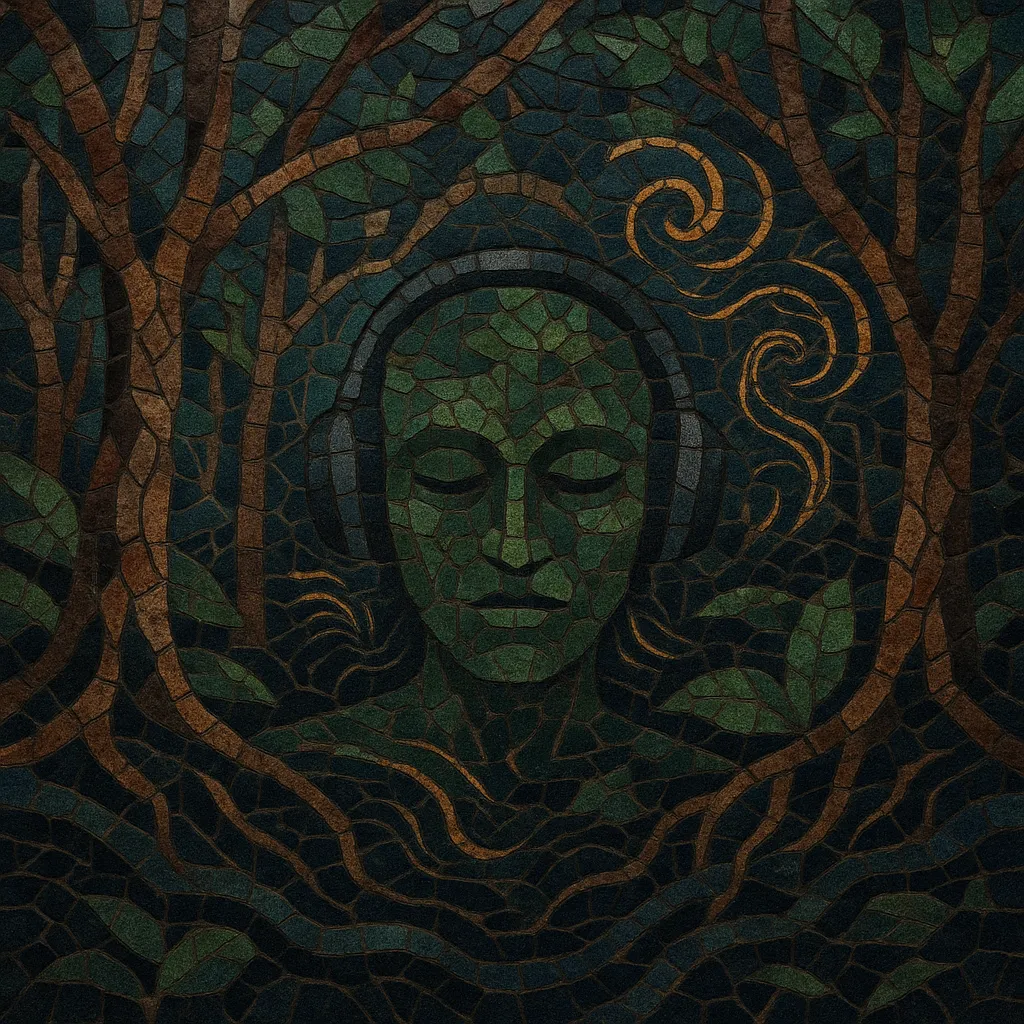Forest psytrance is a dark, organic strain of psychedelic trance that emphasizes hypnotic grooves, bio‑acoustic textures, and a sense of nocturnal wilderness. Typically running around 145–156 BPM, it favors intricate percussive lattices, rubbery rolling basslines, and evolving soundscapes that feel alive—full of insectoid chirps, creaking wood, and wind‑like drones.
Unlike melody‑forward full‑on or the ultra‑synthetic aggression of hi‑tech, forest aims for immersive storytelling. It leans on minor modes, atonal motifs, and richly modulated timbres, often built from field recordings and granular/spectral processing. The result is a heady, ritualistic atmosphere designed for deep night dancefloors under trees.
Forest psytrance coalesced in the Nordic underground—especially Sweden—where producers sought a darker, more organic alternative to glossy full‑on and the freewheeling suomisaundi. Early pioneers experimented with slower night BPMs, ritual percussion, and field recordings, channeling the atmosphere of deep woods and long northern nights.
Through the mid–late 2000s, labels such as Sanaton (Sweden) and Parvati Records (Denmark, with strong ties to the Scandinavian scene) helped codify the sound—earthy basslines, living textures, and long‑form narrative arrangements. Later, imprints like Forestdelic (Slovenia) and Deviant Force (Germany) fostered a broad international community, bringing in artists from the Balkans, Greece, Italy, Russia, and beyond.
Producers blended psytrance’s rolling low‑end with dark ambient and electro‑acoustic techniques: granular resynthesis, heavy modulation, and intricate FX chains sculpted insect‑like clicks, wooden knocks, and mossy drones. Melodic content remained sparse or micro‑tonal, prioritizing mood, motif mutation, and polyrhythmic interplay over big lead hooks.
By the 2010s, forest psy became a mainstay of nighttime festival slots worldwide, influencing adjacent night‑time styles and nudging darker full‑on and psycore toward more textural, story‑driven arrangements. Today it thrives as a craft‑oriented niche prized for immersive dancefloor journeys and audiophile sound design.


